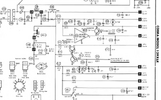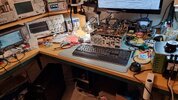The AC power supply in my Cobra 139XLR has several zener-regulated DC taps that feed voltages to various portions of the circuit. The 100uf cap in the circuit shown below gets EXTREMELY hot. All of the components in the circuit checked good, but I replaced them with the same values only higher voltage and wattage ratings. Regulated voltage is within specified limits. This particulsr tap only supplies one point in the circuit. The base bias on the buffer for the carrier osc output. Radio works fine. but this hot cap bothers me. Any ideas to prevent it from heating up so much ??
- J.J. 399

- J.J. 399



